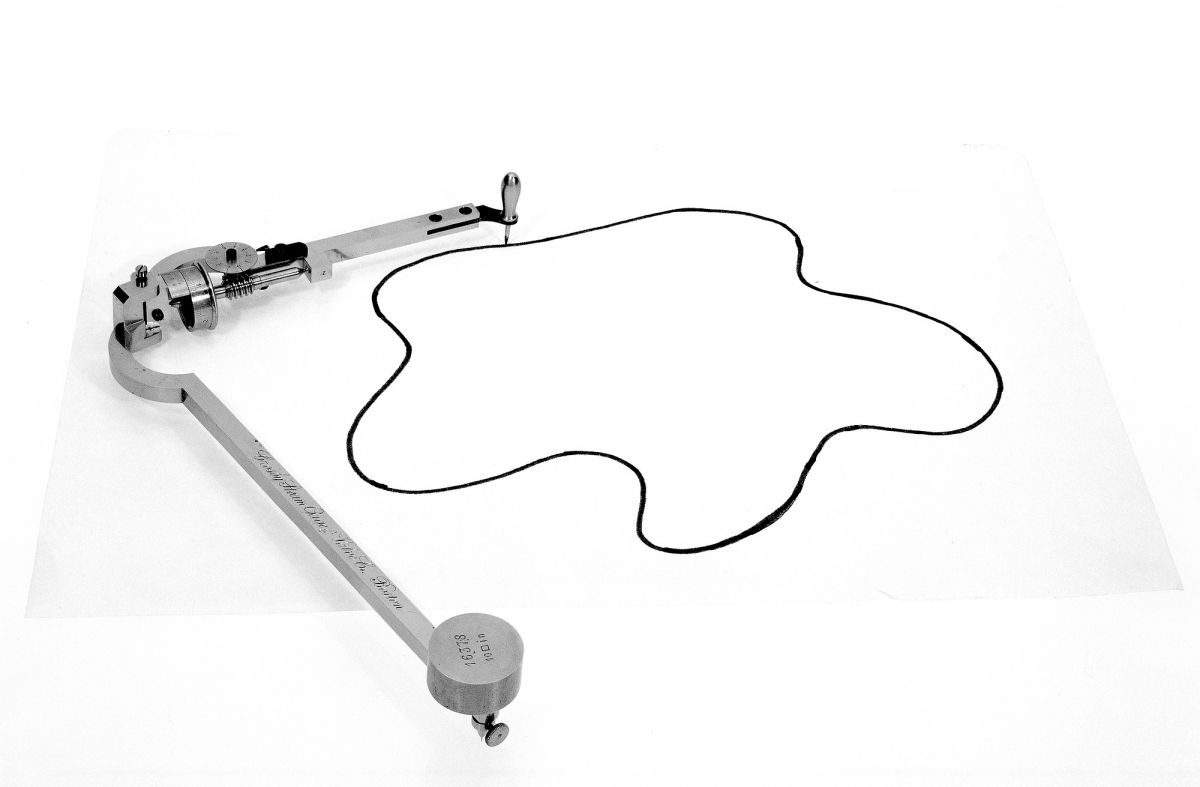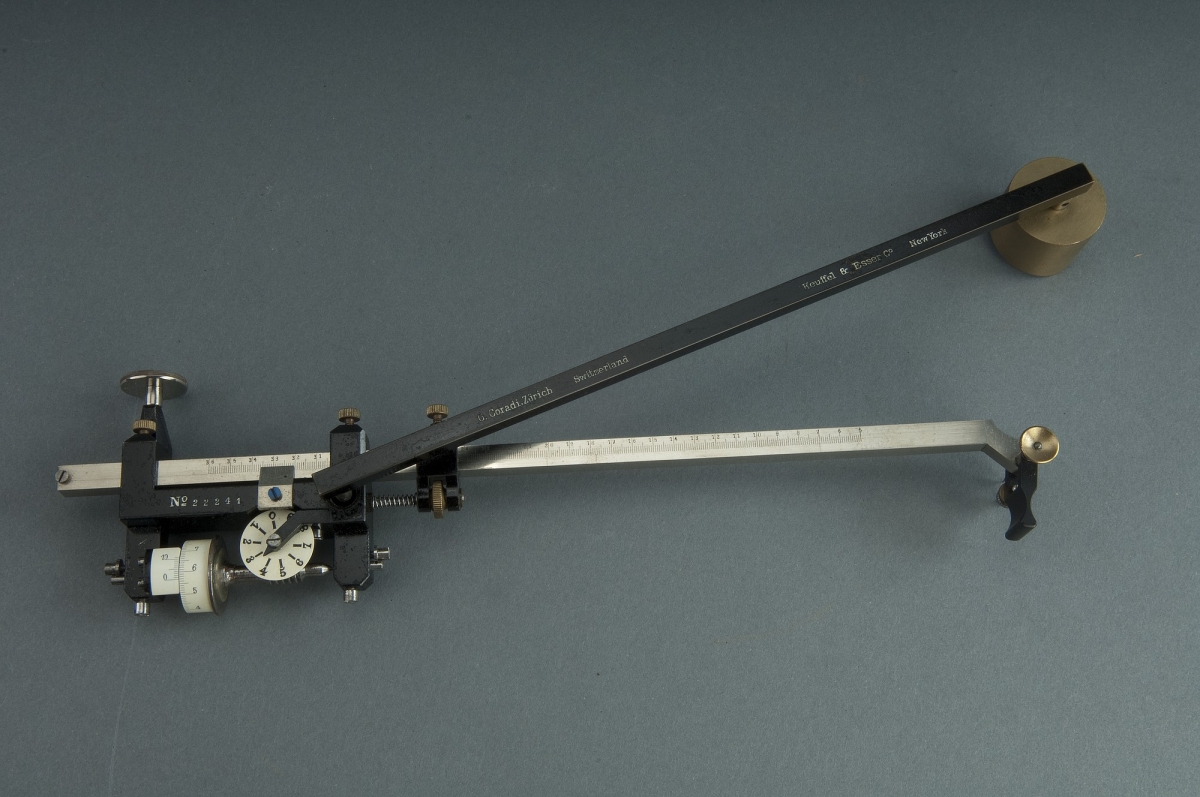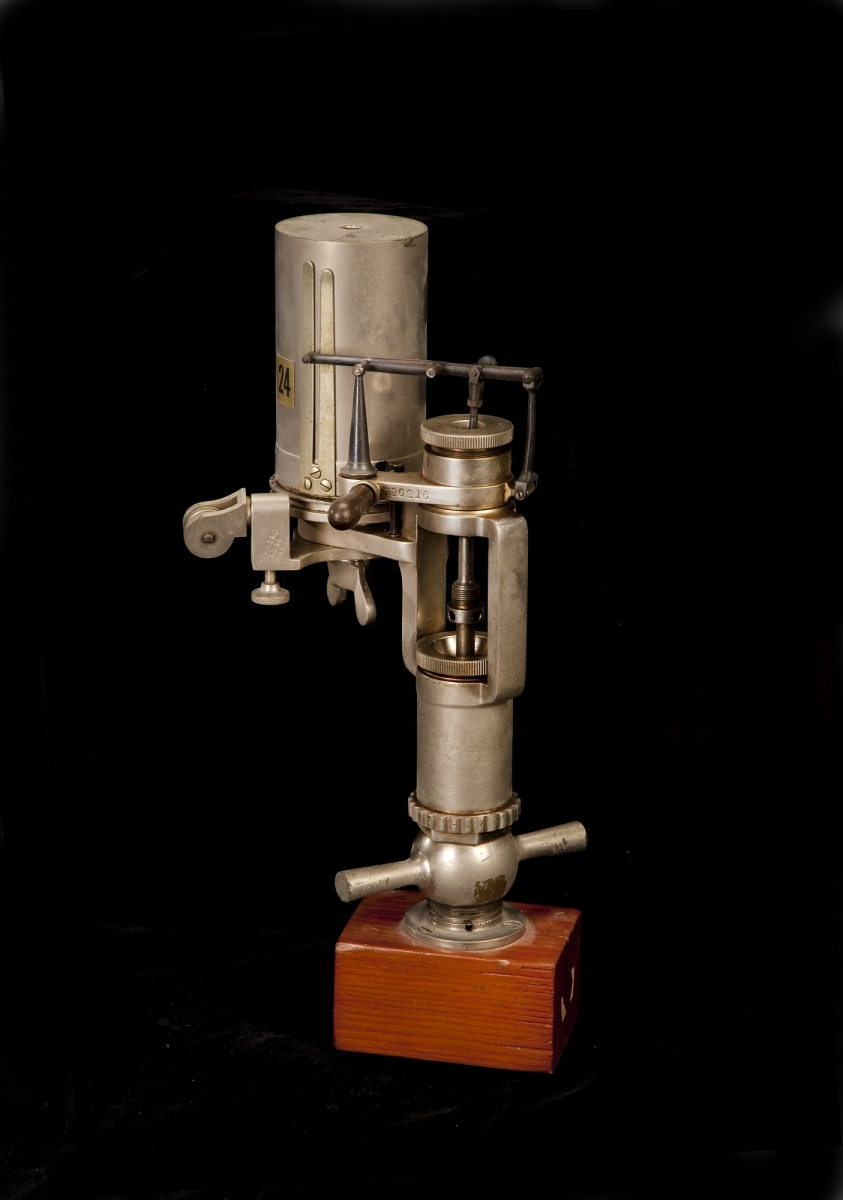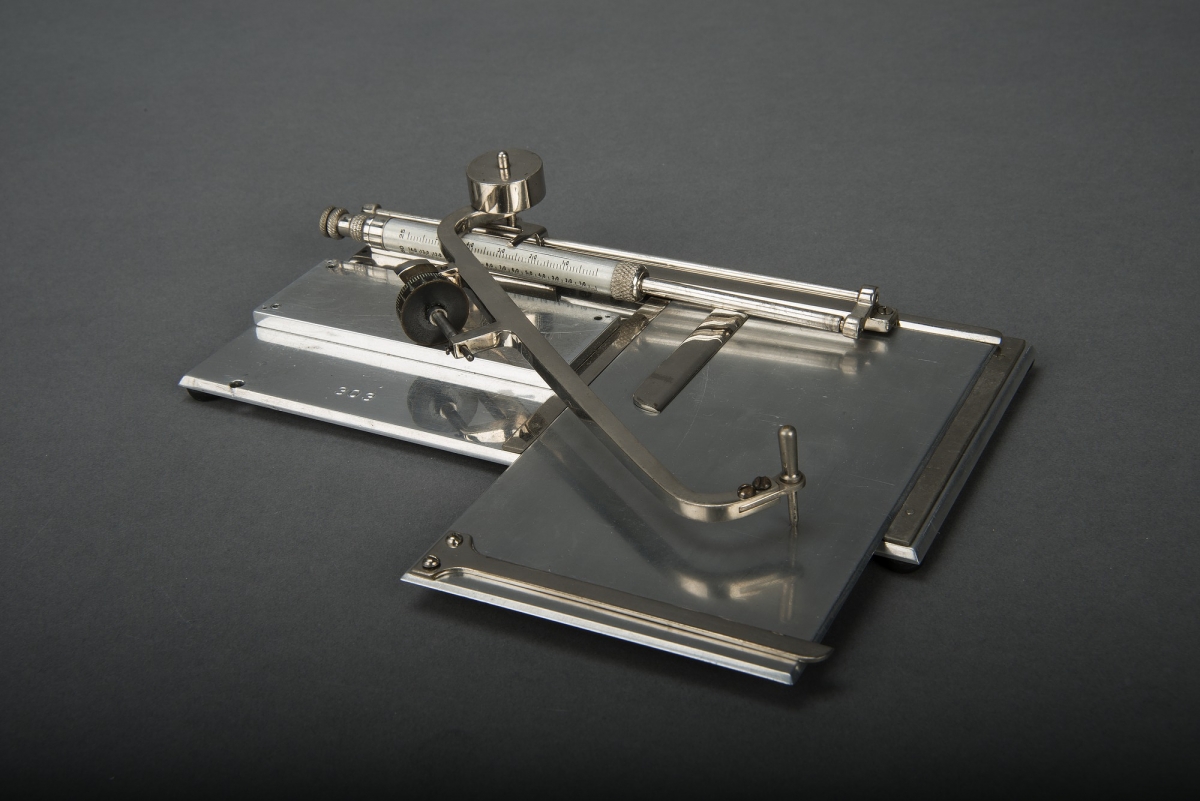- About MAA
- Membership
- MAA Publications
- Periodicals
- Blogs
- MAA Book Series
- MAA Press (an imprint of the AMS)
- MAA Notes
- MAA Reviews
- Mathematical Communication
- Information for Libraries
- Author Resources
- Advertise with MAA
- Meetings
- Competitions
- Programs
- Communities
- MAA Sections
- SIGMAA
- MAA Connect
- Students
- MAA Awards
- Awards Booklets
- Writing Awards
- Teaching Awards
- Service Awards
- Research Awards
- Lecture Awards
- Putnam Competition Individual and Team Winners
- D. E. Shaw Group AMC 8 Awards & Certificates
- Maryam Mirzakhani AMC 10 A Awards & Certificates
- Two Sigma AMC 10 B Awards & Certificates
- Jane Street AMC 12 A Awards & Certificates
- Akamai AMC 12 B Awards & Certificates
- High School Teachers
- News
You are here
Online Museum Collections in the Mathematics Classroom – Planimeters and Green's Theorem
Classroom Application #5: Planimeters and Green's Theorem

Amsler type 2 polar planimeter, sold by Crosby Steam Gage & Valve, 1880s, Smithsonian Institution negative number 73-1252.
A planimeter is a 19th-century invention that measures the area inside a closed curve. The user sets up the device and traces the curve with a metal point. Moving the tracer arm displaces a measuring wheel according to an integral function; basically, the net roll of the wheel is proportional to the area inside the curve. After tracing the curve, the user reads the area off the measuring wheel.
The planimeter was intended to be a tool for professional practice, but it has also come to be employed in teaching mathematics. For 19th-century surveyors, machinists, and engineers, we might say that the instrument offered “integrating without integration,” a way to solve recurring problems without having to work through the underlying computations. A quick perusal of the tables of contents in journals such as Annals of Mathematics, Mathematical Gazette, and the American Mathematical Monthly suggests that, for mathematicians at the turn of the 20th century, planimeters offered an opportunity to demonstrate mathematical theory in daily life, from the operation of steam engines to data collection in the biological sciences. While mathematics professors at that time talked about teaching students to use planimeters as a means of checking their work, in its periodic rediscoveries since then, educators have brought planimeters into the classroom chiefly for illustrating Green's Theorem (the relationship between a line integral around a simple closed curve C and a double integral over the plane region D bounded by C, it is named after George Green, and is the two-dimensional special case of the more general Stokes' theorem.). For instance, see the following references:
Eggers, John. “The Compensating Polar Planimeter.” University of California-San Diego, 2010. http://www.math.ucsd.edu/~jeggers/Resources/planimeter_slides.pdf. Walks readers through the mathematics of the instrument.
Foote, Robert L., and Ed Sandifer. “Area Without Integration: Make Your Own Planimeter.” In Hands on History: A Resource for Teaching Mathematics, edited by Amy Shell-Gellasch (Washington, DC, 2007), 71–88. Historical background on planimeters and suggestions for several classroom activities, including constructing a polar planimeter from TinkerToys®. Foote has several working papers housed on arXiv and a companion website, http://persweb.wabash.edu/facstaff/footer/Planimeter/PLANIMETER.HTM.
Leise, Tanya. “As the Planimeter's Wheel Turns: Planimeter Proofs for Calculus Class.” College Mathematics Journal 38, no. 1 (2007): 24–31. Gives formulas for a variety of forms of planimeter.
The National Museum of American History (NMAH) object group illustrates the influence of two Swiss makers and a particular story of American innovation; exploring these stories could lead to collaborations with history, business, and engineering faculty. First, in 1854 Jacob Amsler, a teacher and mathematician, made a planimeter by joining two metal arms, one with a weight that held the instrument in place, and one with a tracer point that moved along the curve. He placed a measuring wheel at the hinge, along with a vernier for increasing the precision with which measurements could be read. He based the instrument on polar coordinates. Although exact figures are not available for other forms of planimeters sold in the 1850s, Amsler's price of $20.00 was likely considerably lower than the competition. In its first 60 years, Amsler's firm made and distributed over 50,000 polar planimeters in Europe and the United States. Nine of these are in the NMAH mathematics collections.

Compensating polar planimeter, made by Gottlieb Coradi's workshop, sold by Keuffel & Esser, 1914, Smithsonian Institution negative number DOR2011-5278.
Other workshops adapted the general form of Amsler instruments, including Gottlieb Coradi, who established a workshop in Zurich in 1880 and began making wheel and disc polar planimeters in the Amsler style soon thereafter. In 1894, he modified the design into the "compensating" polar planimeter by raising the pole arm higher than the tracing arm and connecting the arms with a ball joint instead of a hinge. This allowed the user to trace in both the clockwise and counterclockwise directions, preventing errors introduced by planimeters made in the Amsler style. Of course, this instrument also cost more than Amsler planimeters: around 1910, the Coradi firm charged $36.00 for the fixed arm version and $47.00 for an instrument with an adjustable pole arm, like this one. From about 1900, the firm also made rolling sphere planimeters. One nice feature of the Coradi planimeters for museum curators is that the firm put a label inside each case with the specific calibration for the instrument and the exact date on which each planimeter was manufactured. Seven instruments from the Coradi workshop are at NMAH.

Steam engine indicator made by American Steam Gauge Co., early 20th century, Smithsonian Institution negative number RWS2011-01724.
In the United States, planimeters were frequently used to read the diagrams produced by steam engine indicators. The indicator records the pressure in a cylinder of a steam engine while the piston moves through one cycle, so that a factory foreman could monitor the conditions inside the steam engine. The pencil attached to the indicator recorded motion in two directions, the movement of the piston and the changes in pressure, which is why a drawing of a closed curve was produced. Designing indicators was big business in the late 19th and early 20th centuries, and the companies that manufactured indicators typically also sold planimeters for determining the area of steam engine indicator diagrams. Twelve planimeters in the object group were made in the United States; eight of these were manufactured specifically for reading the diagrams created by steam engine indicators. John Coffin of Syracuse, New York, patented a design in 1881 that was manufactured by the Ashcroft Manufacturing Company and, later, the John S. Bushnell Company. Both firms were located in New York City in the late 19th and early 20th centuries. Edward Jones Willis of Richmond, Virginia, also received several patents for planimeters. One of his designs was made and sold by James L. Robertson & Sons, another steam engine indicator manufacturer located in New York City.

Bushnell-Coffin linear planimeter manufactured by John S. Bushnell Company and sold by American Schaeffer & Budenberg Corporation, 1923–1937, Smithsonian Institution negative number DOR2013-001060.
Amy Ackerberg-Hastings (University of Maryland University College) and Amy Shell-Gellasch (Montgomery College), "Online Museum Collections in the Mathematics Classroom – Planimeters and Green's Theorem," Convergence (December 2014)




